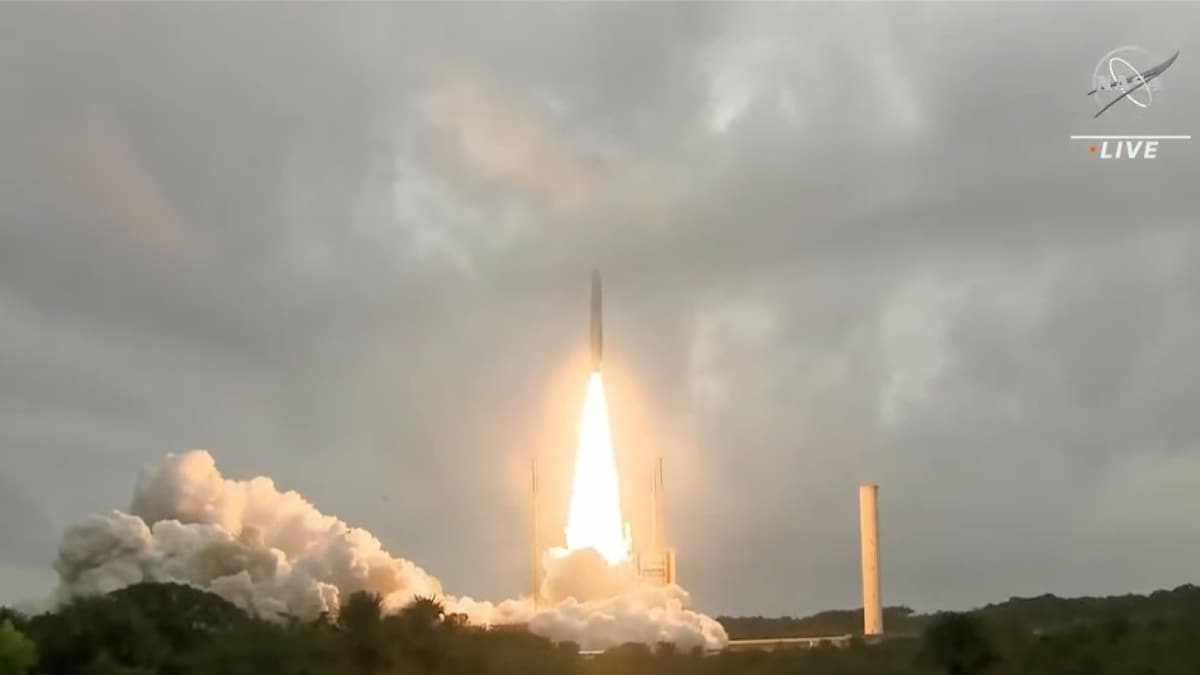NASA’s James Webb Space Telescope, which was launched on Christmas Day, had begun its first mid-course correction burn on December 25 at 7:50pm EST (6.20am IST on December 26). This burn is one of two time-sensitive milestones, the first being the deployment of solar arrays which occurred shortly after its launch. The burn, which lasted for 65 minutes, was successfully completed. It helped adjust the space telescope’s trajectory toward the second Lagrange point, often known as L2. Amid much fanfare, the largest space telescope ever built was launched on December 25 from the Guiana Space Center in Kourou, French Guiana.
NASA even streamed the telescope’s flight live and broadcast the launch on various social media channels. To reach its orbit, James Webb Space Telescope must do its own mid-course thrust correction operations after launch.
In a tweet on its official handle, NASA Webb Telescope, the agency stated that the burn was a “success,” and added that it “helped fine-tune Webb’s trajectory toward its orbit around the second Lagrange point”, which is around 1.5 million kilometres from the Earth.
In a subsequent tweet, NASA also stated that “Webb will orbit the Sun in line with Earth so its sunshield can protect the telescope from light and heat”.
On its official YouTube channel, the James Webb Space Telescope channel also shared a short animation of the telescope’s orbit as seen from above the Sun’s north pole. In the description, it stated that the telescope “will not be in orbit around the Earth, like the Hubble Space Telescope is — it will actually orbit the Sun.” It added further what was so special about the second Lagrange point or L2. “It lets the telescope stay in line with the Earth as it moves around the Sun.”
According to a James Webb Space Telescope blog post, if the telescope gets too much thrust, “it can’t turn around to move back toward Earth because that would directly expose its telescope optics and structure to the Sun, overheating them and aborting the science mission before it can even begin.” The blog post also added that after this burn, “no key milestones are time-critical.”
On December 26, the James Webb team also shared an update on the telescope’s gimbaled antenna assembly. “This antenna will be used to send at least 28.6GB of data down from the observatory, twice a day,” stated a tweet.
???? Hello Webb? It’s us, Earth!
Our team just deployed the gimbaled antenna assembly, which includes Webb’s high-data-rate dish antenna. This antenna will be used to send at least 28.6 Gbytes of data down from the observatory, twice a day: https://t.co/4vKcbjbKJO pic.twitter.com/zFjhF3yLzY
— NASA Webb Telescope (@NASAWebb) December 26, 2021
James Webb Space Telescope is a successor to NASA’s Hubble Space Telescope. It’s an international project led by NASA with the European Space Agency and the Canadian Space Agency.

